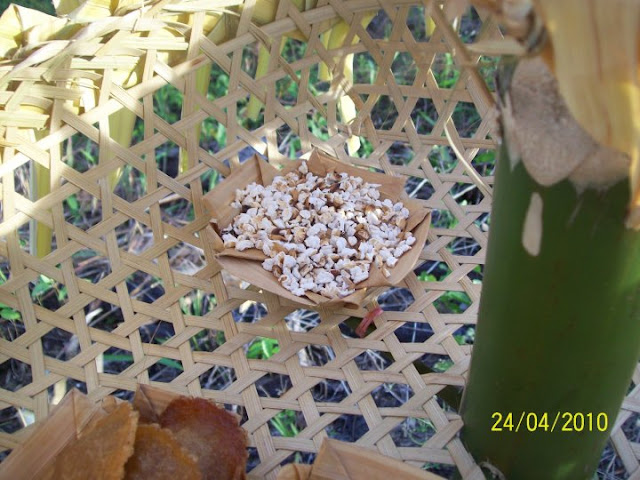Dear Readers,
Sometimes we stumble upon interesting documents. Today I found a very historic document that is important to all sarawakians.
Please read and understand it first and share this with everyone. This is a very important part of our history.
Document and Photo Source: Brooke Heritage Trust
Sunday, November 6, 2011
Tuesday, September 20, 2011
Happy Sarawak Day!
On the 24 th September 2011 Sarawak will celebrate her 170th birthday. Let us celebrate this day to remind us how lucky we are born as Sarawakian and living harmoniuosly with rythmic cultures and heritage :)
Kindly educate any Sarawakians you know to also remember and commemorate this date in spirit if not in fact. Just as before Creation, the Spirit was first, so perhaps in future, before the reality comes, the date must start to be commemorated in spirit first.
By:
Learn Melanau
On 12:29 PM
Tuesday, September 13, 2011
Grammar 8: The prefix "Ter-" in melanau (Imbuhan "Ter-" dalam bahasa melanau)

The malay prefix "ter-" correspond to melanau prefix "pe-" and "trah" and auxiliary word "kajih" . Verb with prefix "pe-" have two categories:
By:
Learn Melanau
On 12:32 AM
Saturday, September 10, 2011
Grammar 7: PART1: Melanau word order ( susun atur ayat melanau)

Word order (susun alak telabau) in melanau sentences is both more variable and more flexible than in English or malay.
By:
Learn Melanau
On 5:10 PM
Sunday, August 28, 2011
Happy Eid Mubarak!
When my arms can't reach people close to my heart.
I always hug them with my prayers.
May allahs peace be with you.
A very happy eid mubarak to you
Learn Melanau wish a very happy and peaceful Eid Mubarak to
all Muslims Brothers And Sisters around the World.
May this year’s Eid give you,
All the happiness and,
Joy of this world and,
Hope that the blessing,
Of the AL-Mighty be with you all the time, Ameen.
By:
Learn Melanau
On 5:33 AM
Saturday, July 30, 2011
Ramadan Kareem

Dear Readers,
May the light that we celebrate at Ramadan
show us the way and lead us together on the
path of peace and social harmony
By:
Learn Melanau
On 3:40 PM
Thursday, July 14, 2011
The Original Malaysia Agreement ( Full text)

Dear Readers,
Sometimes we stumble upon interesting documents. Today I found a very historic document that is crucial to the formation of Malaysia i.e. The Malaysia Agreement. In this agreement include the 20 point agreement of Sabah and the 18 points agreement of Sarawak.
By:
Learn Melanau
On 8:51 PM
Tuesday, July 12, 2011
Grammar 6: Melanau adjectives ( Kata sifat bahasa melanau)

An adjective is a word that modifies a noun (kata benda) by describing it in some way: shape, color, size, nationality.
Melanau adjectives are very different from english and malay adjectives. English adjectives are always in front of the noun eg: big book, cute girl and Malay adjectives are always after the noun eg: buku besar, gadis cantik. In melanau however adjectives can be either in front of the noun or after the noun. The meaning is the same only differs in emphasis. This is the beauty of melanau language that utilize less word to convey many different context and concept :)
By:
Learn Melanau
On 8:21 PM
Monday, July 11, 2011
Grammar 5: Simple melanau preposition
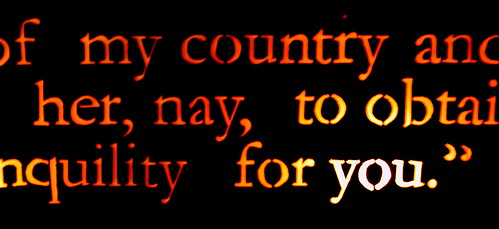
A preposition links nouns, pronouns and phrases to other words in a sentence. A preposition usually indicates the temporal, spatial or logical relationship of its object to the rest of the sentence as in the example in the table in this post.
By:
Learn Melanau
On 11:27 PM
Wednesday, June 22, 2011
Unique Beauty: The melanau's forehead flattening custom (Melipih Beleang)
 |
| Moon-face( round face) is most admired beauty feature by the melanaus-Photo by Pawan Ako |
By:
Learn Melanau
On 12:00 AM
Friday, June 10, 2011
The great Rajahs of Sarawak and the melanaus
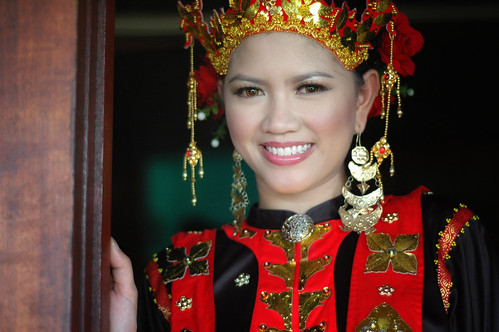
The Melanaus in general:
The Melanau are a relaxed and humorous people. Rajah James Brooke, like generations of men before and after him, thought the Melanau girls particularly pretty.
By:
Learn Melanau
On 11:07 PM
Wednesday, June 8, 2011
Learn Melanau & Melanau Picture Dictionary is now going mobile!
Learn Melanau is happy to say that our website is now compatible with mobile phone's browsers like iPhone4 , iPod touch, Android, Palm Pre, Samsung touch and BlackBerry Storm/Torch mobile devices. Now you can learn melanau anywhere at anytime XD
You just need to type the address of this blog on our mobile browser and "yen ji siyen":p
Website Learn Melanau type: www.bit.ly/learnmelanau
Website Melanau Dictionary type: www.bit.ly/kamusmelanau
By:
Learn Melanau
On 11:58 PM
Wednesday, June 1, 2011
Blues Tubeng Balau with lyrics- Lagu Blues Melanau
Learn More about The Process of Making Melanau Sago Pearl
Photo by: Souhusin- Album: Mukah Subet Sagok
Lirik Blues Tubeng Balau
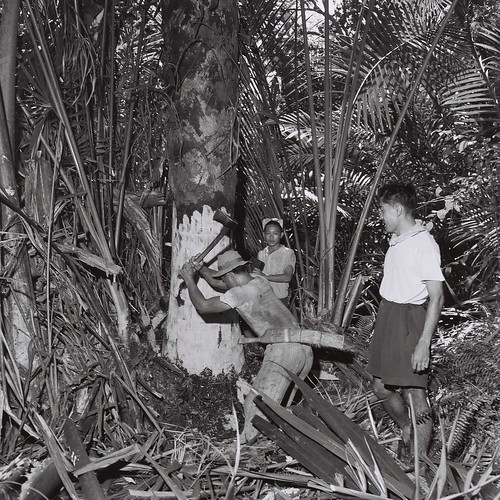
Apak emak telou tubeng balau
bak jaja pinyeang duit jelau jelau
kenaan jereki
bak neyekul telou debau
By:
Learn Melanau
On 10:19 PM
Sunday, May 29, 2011
Kotobian Tadau Tagazo do Kaamatan and Happy gawai- Gayu guru gerai nyamai to all my sabahan and sarawakian friends :)
Kotobian Tadau Tagazo do Kaamatan and Happy gawai- Gayu guru gerai nyamai to all my sabahan and sarawakian friends :)
By:
Learn Melanau
On 5:49 AM
Lesson 10: Collection of Melanau Songs ( Koleksi Lagu-lagu Melanau)
Caynie De: Nda Guna tan agei- it is hopeless
Caynie-Die on FaceBook
Caynie De on Twitter
Lyrics by: Caynie De Vocals by: Caynie De Music produced by: RDZ Recorded & Mixed by: RDZ
Caynie De: Yen ji kaau- There you are
Caynie-Die on FaceBook
Caynie De on Twitter
Lyrics by: Caynie De Vocals by: Caynie De Music produced by: RDZ Recorded & Mixed by: RDZ
Sazia: Bunga Layuk Dagen Sengsara- Flower withered in agony
album; Cinta Tuwah 2002 lirik ; Len Bubat lagu ;Len Bubat
Sazia: Bier kou tuwad - Let me go
album; Cinta Tuwah 2002 lirik ; Len Bubat lagu ;Len Bubat
Sazia: Enda bei Seratan
album:Cinta Tuwah 2002 lirik ; Len Bubat lagu ;Len Bubat
Sazia & Nizza: Joget adek koh
Nizza: Janji tuwah kenunci- Our locked promise
Atonia Dedo: Debei agei kaau- No more you
Caynie-Die on FaceBook
Caynie De on Twitter
Lyrics by: Caynie De Vocals by: Caynie De Music produced by: RDZ Recorded & Mixed by: RDZ
Caynie De: Yen ji kaau- There you are
Caynie-Die on FaceBook
Caynie De on Twitter
Lyrics by: Caynie De Vocals by: Caynie De Music produced by: RDZ Recorded & Mixed by: RDZ
Sazia: Bunga Layuk Dagen Sengsara- Flower withered in agony
album; Cinta Tuwah 2002 lirik ; Len Bubat lagu ;Len Bubat
Sazia: Bier kou tuwad - Let me go
album; Cinta Tuwah 2002 lirik ; Len Bubat lagu ;Len Bubat
Sazia: Enda bei Seratan
album:Cinta Tuwah 2002 lirik ; Len Bubat lagu ;Len Bubat
Sazia & Nizza: Joget adek koh
Nizza: Janji tuwah kenunci- Our locked promise
Atonia Dedo: Debei agei kaau- No more you
By:
Learn Melanau
On 5:14 AM
Thursday, May 26, 2011
Introducing world's first melanau inter dialect picture dictionary
Dear Readers,
Learn melanau would like to introduce you to the world's first melanau inter dialect PICTURE dictionary a.k.a Kamus Melanau bergambar untuk pelbagai dialect. This will be our official dictionary and the original blog (Learn-melanau) will only feature melanau cultures and lessons. You can visit the website by clicking the banner below:
By:
Learn Melanau
On 10:12 PM
Tuesday, May 24, 2011
Lesson 9: Colours in melanau mukah (warna dalam bahasa melanau mukah)
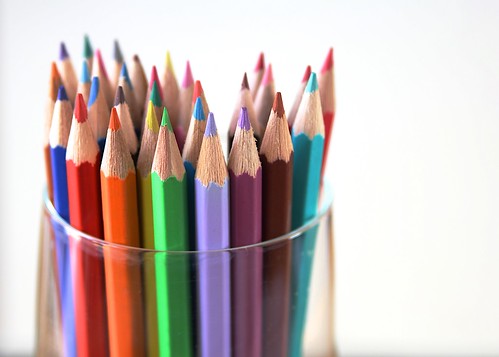
Now is the time to remember pencil colours and maybe get them out again.
Red- Seak
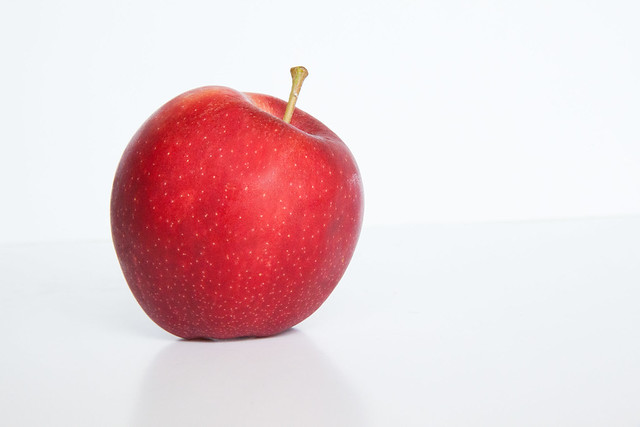
Yellow- Kunieang
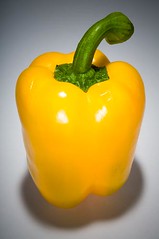
Blue- Biruk
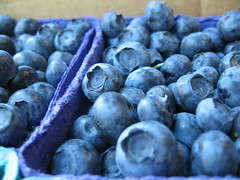
Green- Gaduong
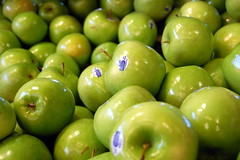
Hitam- Bilem

Orange- Kunieang oren
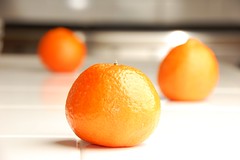
White- Apuk
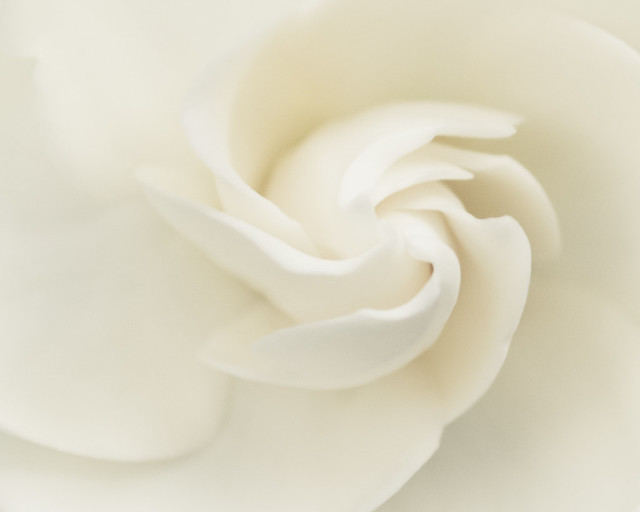
Pink- Kalaih
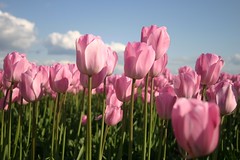
Purple- Ingkodok

Brown- Pirang

By:
Learn Melanau
On 1:51 AM
Sunday, May 22, 2011
A Moment of silence for the victims of Al Takwa landslide
On 21 May 2011 a tragedy hit malaysia. At 2:30pm a landslide occurred and buried the Al-Takwa orphanage.
Let's Take a moment of silence and pray for the victims and the people involved working around the clock to rescue the survivors
By:
Learn Melanau
On 3:50 PM
Tuesday, May 10, 2011
Video: Melanau Wedding at Kampung Medong in Dalat-Adat Perkahwinan Melanau
Most ancient societies needed a secure environment for the perpetuation of the species,a system of rules to handle the granting of property rights, and the protection of bloodlines. The institution of marriage handled these needs.
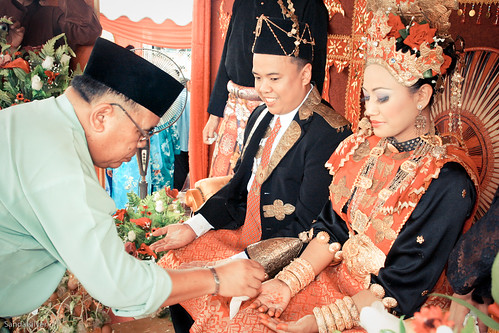
By:
Learn Melanau
On 8:16 AM
Bethrothal and Dowry gifts for A-Metahei (9 Pikoul)- Low Aristocrats
Amongst the Melanaus, there is a system of rank and every person belongs to a certain rank or 'adet basa'. A marriage within the same rank is called Sama Gara. In addition Sida adet is a marriage across rank boundary.
The preferred marriage is with a second cousin of any kind, provided it was not across a rank boundary.
Tanda Tuneang ( Bethrothal gift):
All Photos are by Eduine Kusai
The preferred marriage is with a second cousin of any kind, provided it was not across a rank boundary.
Tanda Tuneang ( Bethrothal gift):
All Photos are by Eduine Kusai
Tanda Tuneang adet 9 Pikoul
By:
Learn Melanau
On 8:15 AM
Bethrothal and Dowry gifts for A-Bumi Giga (5 Pikoul or 7 Betirih)- Tied Freemen
Amongst the Melanaus, there is a system of rank and every person belongs to a certain rank or 'adet basa'. A marriage within the same rank is called Sama Gara. In addition Sida adet is a marriage across rank boundary.
The preferred marriage is with a second cousin of any kind, provided it was not across a rank boundary.
All Photos are by Eduine Kusai
Tanda Tuneang ( Bethrothal gift):
The preferred marriage is with a second cousin of any kind, provided it was not across a rank boundary.
All Photos are by Eduine Kusai
Tanda Tuneang ( Bethrothal gift):
Tanda Tuneang adet 7 Betirih ( 5 Pikoul)
By:
Learn Melanau
On 8:14 AM
Bethrothal and Dowry gifts for A-Bumi Ateng (7 Pikoul)- True Freemen
Amongst the Melanaus, there is a system of rank and every person belongs to a certain rank or 'adet basa'. A marriage within the same rank is called Sama Gara. In addition Sida adet is a marriage across rank boundary.
The preferred marriage is with a second cousin of any kind, provided it was not across a rank boundary.
Tanda Tuneang ( Bethrothal gift):
All Photos are by Eduine Kusai
The preferred marriage is with a second cousin of any kind, provided it was not across a rank boundary.
Tanda Tuneang ( Bethrothal gift):
All Photos are by Eduine Kusai
Tanda Tuneang adet 7 Pikoul
By:
Learn Melanau
On 8:14 AM
Sunday, May 8, 2011
Friday, May 6, 2011
Prayer of Kaul ( Doa Kaul)
Before starting the feast of Kaul, a Serahang must be prepared. Serahang is a flat round offering basket raised on a 7 feet bamboo pole. It is made of bulok tedieng, semat, nypa leaves, daun iseng and daun tigoh. Serahang means " to offer" or "to surrender" and serves as offering basket for Ipok ( Spirits). The offerings are:
The Offerings : All Photos by Eduine Kusai
Bertih ( Rice pops)
Pulut Kunieng ( Yellow glutinous rice)
Penyaram ( Sweet snack made of rice flour)
Papit ( packed rice in woven nypa leaf pouch)
Rukok Kirai ( Cigarettes with Nypa Wrappers)
Belen ( Betel and areca nuts)
The Father of Kaul will start the ceremony. He sings prayer to all "Ipok" (Spirits) while holding a bowl of Beraih Kunieng ( Uncooked yellow Rice). The Prayer goes:
| Oi kelou Ipok Ipok Alud Ipok Daya Ipok Wab Ipok La-an Ipok Bau Ipok Dibak Ipok Jakak Ipok Pegak Ipok Tanak Ipok Sungai Ipok Li-éak Ipok Telouk Ipok Lidouk Ipok Jalan Ipok Takan Ipok Ipok Keang sigeang mata linga kelou Ipok Itoulah melou sou aneak Menibah kelou sama-sama Bak Keman Bak Pamen | O ye Ipok Ipok of the sea Ipok of the land Ipok of the west Ipok of the east Ipok in high above Ipok at down under Ipok of docks Ipok of river bed Ipok of the earth Ipok of the river Ipok of forest puddle Ipok of the Gulf Ipok of river rill Ipok of the road Ipok of places Ipok Ipok Open your eyes, Lend us your ears O Ipok Here we are your children Welcoming You for Festivity for Feasting |
Then the Father of Kaul would scatter the yellow uncooked rice towards the villagers. In the same time he would continue the Prayer:
| Melou menyabek diak gak kelou Ipok | Bless us O Ipok |
| Bak umur selamet sou aneak nou | Bless us with longevitiy |
| Menyabek rejeki murak gak melou aneak nou | Grant us, your children a bountiful life |
| Neh Muneh | in days to come |
| Inou ji wak meseang wak kureang nejaga | Protect us from hindrance and shortcoming |
| Wak jaet wéak | Deliver us from evil |
| Tuluong nou menyusuh jauk | Banish it far away |
| Kemanlah telou sama-sama Telou gitou lau itou | Let us feast together with you here today |
After that the Father of Kaul would ask permission from the A-Metahei ( Aristrocrats) to begin the feast. After the feast the Serahang is placed on a riverbank while the Bapa Kaul( Father of Kaul ) would sing mantras to invoke the spirits and pours water over the offerings. The Serahang will be placed on the right side of the river mouth or on a sacred place which is called "Mesin" in melanau.
By:
Learn Melanau
On 5:56 AM
Sunday, May 1, 2011
The Melanau's Caste System ( Adet Basa)
At birth a Melanau was placed in a rank category called "basa" or "Pakat", which was that of his father. Relationship between the ranks was formally laid down in the "Adet" ( Law) and a breach of rank rules was an act of disrespect "Tulah" and incurred civil and supernatural penalties.

By:
Learn Melanau
On 11:18 PM
Sacred objects of Kaul
“Culture is the sum of all the forms of art, of love, and of thought, which, in the coarse or centuries, have enabled man to be less enslaved”- Andre Malraux
Photo: Rakan Sarawak
Throughout the history of religions and cultures, objects used in cults, rituals, and sacred ceremonies have almost always been of both utilitarian and symbolic natures. Ceremonial and ritualistic objects have been utilized as a means for establishing or maintaining communication between the sacred (the transcendent, or supernatural, realm) and the profane (the realm of time, space, and cause and effect).
By:
Learn Melanau
On 6:12 AM
Monday, April 25, 2011
Kaul Festival, Pulek Likou and Miteang
God, who has given the world to men in common, has also given them reason to make use of it to the best advantage of life, and convenience. The earth, and all that is therein, is given to men for the support and comfort of their being. And all the fruits it naturally produces, and beasts it feeds, are for mankind in common, as they are produced by the spontaneous hand of nature. The Nature on the other hand is guarded and protected by the Spirits. Without the Spirits the nature will be chaotic and human will face difficult time like famine, drought or floods. Hence it is out of respect and gratitude for the Spirits and God, the melanau must celebrate Kaul.
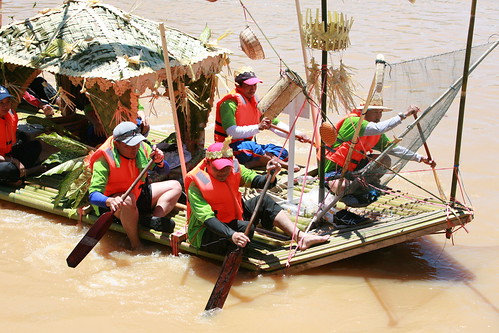
Photo: Decorative boat carrying the offering basket (Seraheang) by Si Mata Kecik
By:
Learn Melanau
On 3:00 PM
Sunday, April 10, 2011
Lesson 8: Form of address in a melanau family
Today we are going to learn about how the melanaus address members in their family.
First of all here is a basic word list:
| English | Malay | Melanau |
| Father | Ayah | Tama |
| Mother | Emak | Tina |
| Son | Anak lelaki | Aneak lai |
| Daughter | Anak Perempuan | Aneak mahou |
| Grandfather | Datuk | Tipou lai |
| Grandmother | Nenek | Tipou mahou |
| Grandson | Cucu lelaki | Sou lai |
| Granddaughter | Cucu perempuan | Sou mahou |
| Brother | Abang | Akak* |
| Sister | Kakak | Akak* |
| Uncle | Bapa Saudara | Tuak |
| Aunt | Emak Saudara | Tebusou |
| Cousin | Sepupu | Jipou |
| nephew | Anak Saudara ( Lelaki) | Naken lai |
| niece | Anak Saudara ( Perempuan) | Naken mahou |
| firstborn | Anak Sulung | Apah tika lalu |
| lastborn | Anak Bongsu | Apah tadei lalu |
| adopted child | Anak Angkat | Aneak Ihou |
| stepchild | Anak Tiri | Aneak Tiheak |
* the word sister and brother are the same in melanau: akak.
It is not same as kakak (malay for sister)
Form of address in a melanau family:
One addresses his or her mother: Inak or Sinak ( English: mum or mama )
One addresses his or her father: Apak or Ma or Sema ( English: dad or papa )
One addresses his or her grandmother: Mak Nek or Mak Ayeng ( English: Nana or Grandma)
One addresses his or her grandfather: Pak Nek or Apak Ayeng ( English: Grandpa )
If one addresses his or her uncles or aunts, it should be according to the order of birth:
- Firstborn: Wa
- 2nd Born: Anjang
- 3rd child or Middle Child: Angah or Ngah
- Others that are younger than the middle child: Cik
- 2nd to lastborn: Udak
- lastborn: Usu
The address form can be used for both uncle and aunt. For example:
Aunt Marie ( 1st born) = Wa Marie
Uncle Sam ( 1st born) = Wa Sam
Aunt Emily ( 4th born ) = Cik Emily
Uncle John ( 4th born) = Cik John
Among siblings (Janeak, adik beradik) there are no specific address form. Normally first name or nickname will be used.
Special case: Suffix of -m. ( Imbuhan Akhiran -m)
Tama, Tina, Tipou, Tebusou have special 2nd person possessive form.
Tina:
Your mother = Tinam and NOT Tina nou ( nou means your )
Eg:
Gan tinam? - Where is your mother?
Tama:
Your father = Tamam and NOT Tama nou
Eg:
Gan tamam? - Where is your father?
Tipou:
Your grandfather = Tipum lai and NOT Tipou lai nou
Eg:
Gan tipum lai? - Where is your grandfather?
Your grandmother = Tipum mahou and NOT Tipou mahou nou
Eg:
Gan tipum mahou? - Where is your grandmother?
Tebusou:
Your aunt = Tebusum and NOT Tebusou nou
Eg:
Gan tebusum? - Where is your aunt?
By:
Learn Melanau
On 11:29 AM
Tuesday, March 15, 2011
Let's pray for japan!
I spoke with an old taxi driver and some elderly staff at the train stations. All of them had been working non-stop and had not been able to go home for a long time. They were visibly very tired, but never once did they show any sign of impatience; they were gentle and very caring. They told me “… because all of us are in this together.” I was touched at what the notion of “all of us” meant to these elderly people. It is a value I will treasure and carry on to my generation.- Twitter
Please Donate For Japan Earthquake today!
there is another way to help by sending words of support and hope.
By:
Learn Melanau
On 10:17 AM
Saturday, February 19, 2011
The Story of Tugau by Heidi Munan
There are many stories about Tugau, the mighty warrior who stood out agains the Sultan of Brunei and his powerful fighting men. Melanau Children are told of his strange feats- when Tugau was a small baby he already had a sword and a magic spear. He was constantly hungry, so he asked his mother to bake a sago pellets as big as hens's egg....
When he grew up he stood then feet tall. almost like a giant. When Tugau coughed in Pasai Siung the noise could be heard all the way up in Sibu. He even tried to climb into the sky once, to visit the spirits who dwell in the kingdom of Likou Kiangan. He built a ladder of three long sticks, but the heavenly watchmen saw him coming and pushed the ladder over. Tugau drop back to the earth without injury, but the three sticks were so big, and fell so heavily, that the they made the rivers of Oya, Mukah and Igan.... (Read more below)
About the Author:
Heidi Munan was born in Switzerland and educated in New Zealand. A graduate post-primary teacher, she has lived in Sarawak since 1965.
Heidi Munan is fond of reading, particularly old books about the history and geography of Southeast Asia. When her children were young, their grandmother used to tell them stories; this developed the author’s interest in folk tales. She has written books about the daily life, customs, arts and handicrafts of her home state.
Heidi Munan does research at the Sarawak Museum. She is a regular contributor to national and foreign newspapers and publications, including the MAS inflight magazine Going Places.
Quoted from: The Literary Pursuit
This Stories is taken from her book The Melanau Stories by Heidi Munan. You can find and buy the book here at SelectBook.com.sg
By:
Learn Melanau
On 11:20 PM
Pokok Rumbia Pokok Kehidupan oleh Heidi Munan
Anda tentu hairan bagaimana batang pokok rumbia boleh menyediakan makanan untuk orang. Pokok rumbia tumbuh di tanah berpaya dalam, selalunya berhampiran dengan laut. Bila pokok itu mula berbunga, batangnya, mula mengembang sehingga ia menjadi gemuk. Ini membawa tanda ia penuh dengan kanji; dan inilan masa yang sesuai untuk mendapatkan hasilnya.
By:
Learn Melanau
On 11:06 PM
What is Seladai?
Photo of A-Bayuh (Shaman) by: Kampung Sesok
A Seladai will assist the Shaman during the ritual. He also need to greet the spirits that come to visit the ceremony. A typical words said by a Seladai while welcoming the Spirits:
Do not be afraid. You are invited by your Grandfather. It is he who is in charge of this crowd and friendly occasion.
In Melanau Shamanistic Healing , Seladai is actually a designated post given by a Shaman ( a-bayuh) to a person who have little or no knowledge about the spirit world. A loose translation of seladai in english is Lay Assistance for the Shaman.
A Seladai is needed during a ritual healing called Payun. Payun means to swing and the healing required the patient to rock on a rattan swing forwards and backwards in the direction of west and east during the ritual. Payun is also called "Pengajih segala pubat"- (end of remedies) because it is the last resort after all possible treatments came to no avail. It is the most elaborate and intricate and expensive bayuh.
During the Payun, the Shaman ( a-bayuh) is called Tama Ayun (Father of the Swing) or Tina Ayun (Mother of the Swing) if the shaman is a female. The Shaman will address himself as Apak Ayeng (Grandfather) or Mak Ayeng ( Grandmother) when talking to the audience. (a-ramai). The Shaman must have one lay assistance (seladai) eventhough other shaman may be helping. A Seladai must be in the house confinement for the entire ritual which normally took five, seven or even nine nights. During the confinement there are prohibitions on bathing, foods and intercourse with spouses. The Patient will be known as the pupil (murip).
A Seladai will assist the Shaman during the ritual. He also need to greet the spirits that come to visit the ceremony. A typical words said by a Seladai while welcoming the Spirits:
Do not be afraid. You are invited by your Grandfather. It is he who is in charge of this crowd and friendly occasion.
By:
Learn Melanau
On 3:51 PM
Friday, February 18, 2011
7 Steps of Making Melanau Sago Pearl (Sagok)
In this post we are going to discover the process of making Sagok. Sagok are cooked sago pearls made from Sago starch (Sei). The Melanau Consider it a staple food. Sago Palm (Metroxylon sagu) is fondly dubbed the "Tree of Life" by the melanau.
Seven Steps of Making Sagok
1. Tubeng Balau (Fell a Sago Palm)

The Sago Palm is felled. Palms are felled just before flowering, when the stem are richest in starch. One palm yields 150 to 300 kg of Starch.
2. Marut (Shredding of Sago Pith)

After removing the bark (Ungun) of the Sago Palm (Balau), the Sago Pith ( Sei Balau) will be placed on a Lagan. A Lagan is made of two tied logs with a small gap in between. A Shredder (Parut) will be then used to make Pou (shredded Sago Pith).
3. Menyak ( Extraction of Sagu Starch- Sei)
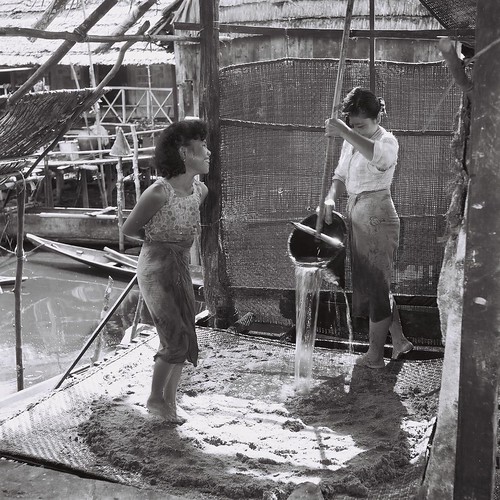
The Pou will be brought to the extraction house called Nyanan ( also known as Jagen). There the Pou will be placed onto an Idaih (a mat made of Nypa leaves).
The Pou will be mixed with water from the river, which drawn up using a Terusueng (a conical bucket made of Sago Palm Frond- Ukap balau).
The extraction is done by trampling and kneading the wet Pou barefoot. This produces a mixture of water and raw sago starch (Sei). This mixture will be collected in a settling container called Jalur. After the Sei have settled on the bottom of the Jalur, a small hole at the end of Jalur known as Serebut will be opened to drain all the water out.
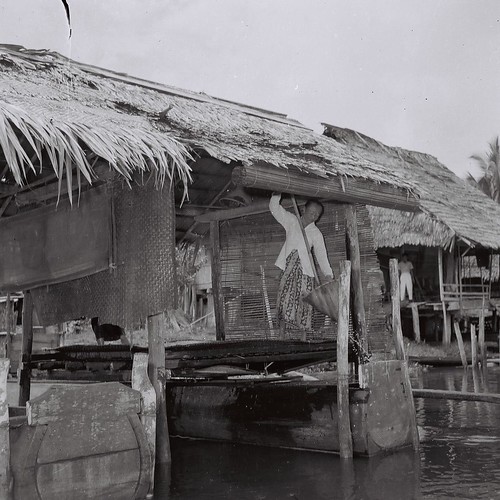
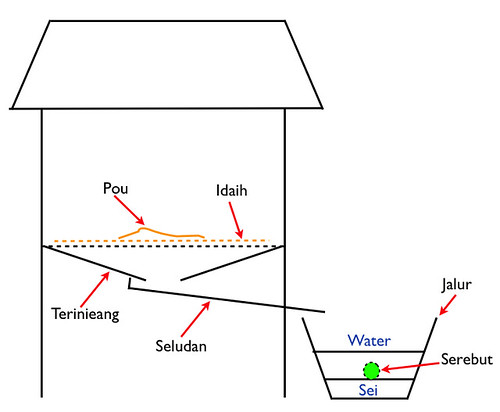
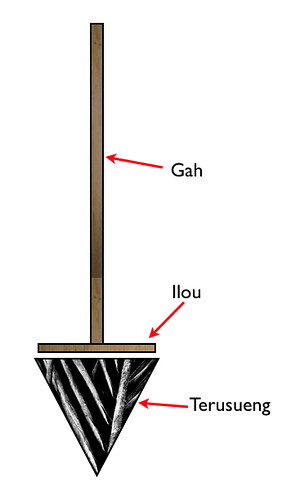
4. Mela'uek (Cleaning of Sei)
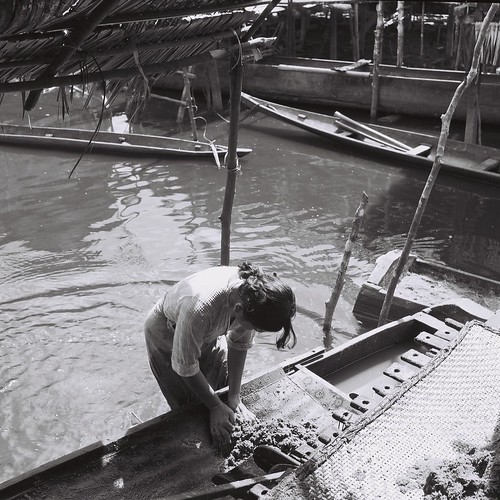
The Sei at the bottom of Jalur will be collected and placed on a Tapih (cheese cloth) which is placed on a Salui (boat). The Sei is washed and strained many times and any impurities will be removed.
5. Mengulud ( Kneading of ingredients for Sago Pearl )
The Raw Sago Starch (Sei) will be mixed with shredded Coconut (Benyuh Parut), rice bran (Dabou Padai) and salt to taste (Sia). The Mixture will be knead on a special Nypa mat called Kejangan. The Kneading process is done by rolling the mixture repeatedly on Kejangan. This Kneading process is called Mengulud.
6. Mengugoh ( A Process to pearl Sago Starch)
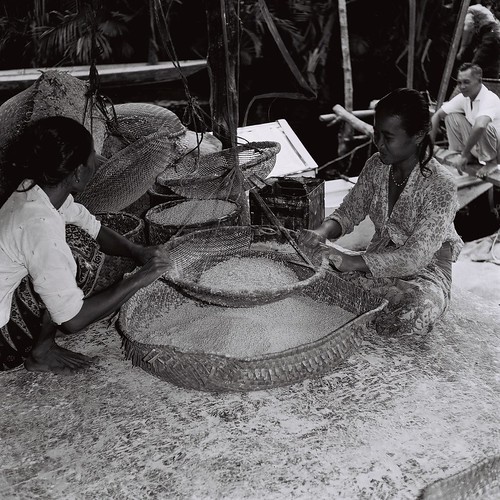
After Mengulud, the mixture will be sift (Mengugoh) using a Takueang (Colander) that is suspended by a rope. This forms the mixture into small round grain.
7. Mu'ui (Cooking of Sago Pearl)
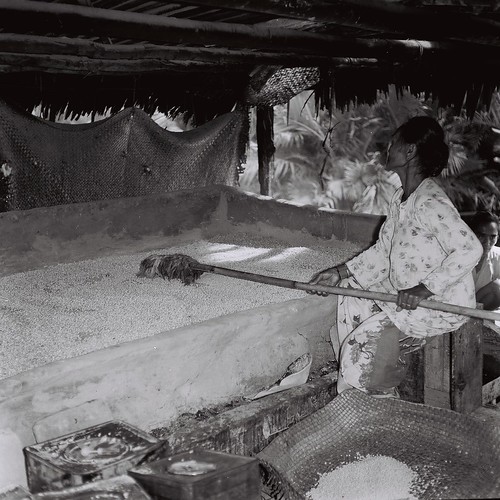
The raw sago pearl are cooked on an clay oven called Belanga. The raw sago pearls must be spread occasionally for them to cook evenly. The cooked Sago pearls are let to cool down and then stored in tight container. The end product look brownish and are called Sagok and can be eaten with smoked fish (Jekan Ipuong), Umai (raw fish salad) or with curry gravy (Keliseh).
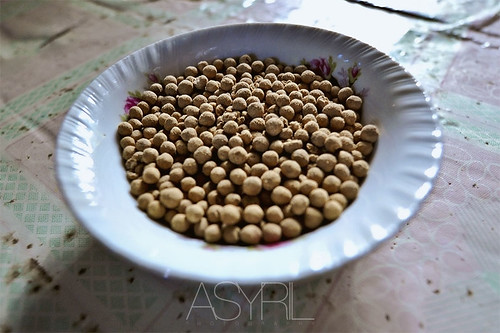
Seven Steps of Making Sagok
Kalau tidak dipecahkan ruyung, manakan dapat sagunya
Mun enda bibah Ungun, enda lah pekena sei
1. Tubeng Balau (Fell a Sago Palm)

Photo by: Souhusin- Album: Mukah Subet Sagok
The Sago Palm is felled. Palms are felled just before flowering, when the stem are richest in starch. One palm yields 150 to 300 kg of Starch.
2. Marut (Shredding of Sago Pith)

Photo by: Souhusin- Album: Mukah Subet Sagok
After removing the bark (Ungun) of the Sago Palm (Balau), the Sago Pith ( Sei Balau) will be placed on a Lagan. A Lagan is made of two tied logs with a small gap in between. A Shredder (Parut) will be then used to make Pou (shredded Sago Pith).
3. Menyak ( Extraction of Sagu Starch- Sei)

Photo by: Souhusin- Album: Mukah Subet Sagok
The Pou will be brought to the extraction house called Nyanan ( also known as Jagen). There the Pou will be placed onto an Idaih (a mat made of Nypa leaves).
The Pou will be mixed with water from the river, which drawn up using a Terusueng (a conical bucket made of Sago Palm Frond- Ukap balau).
The extraction is done by trampling and kneading the wet Pou barefoot. This produces a mixture of water and raw sago starch (Sei). This mixture will be collected in a settling container called Jalur. After the Sei have settled on the bottom of the Jalur, a small hole at the end of Jalur known as Serebut will be opened to drain all the water out.

Nyanan (Jagen)- Photo by: Souhusin- Album: Mukah Subet Sagok

Photo: Construction of a Nyanan (Jagen)

Photo: Construction of a Terusueng
4. Mela'uek (Cleaning of Sei)

Photo by: Souhusin- Album: Mukah Subet Sagok
The Sei at the bottom of Jalur will be collected and placed on a Tapih (cheese cloth) which is placed on a Salui (boat). The Sei is washed and strained many times and any impurities will be removed.
5. Mengulud ( Kneading of ingredients for Sago Pearl )
Photo: Two Ladies are doing the Mengulud process
The Raw Sago Starch (Sei) will be mixed with shredded Coconut (Benyuh Parut), rice bran (Dabou Padai) and salt to taste (Sia). The Mixture will be knead on a special Nypa mat called Kejangan. The Kneading process is done by rolling the mixture repeatedly on Kejangan. This Kneading process is called Mengulud.
6. Mengugoh ( A Process to pearl Sago Starch)

Photo by: Souhusin- Album: Mukah Subet Sagok
After Mengulud, the mixture will be sift (Mengugoh) using a Takueang (Colander) that is suspended by a rope. This forms the mixture into small round grain.
7. Mu'ui (Cooking of Sago Pearl)

Photo by: Souhusin- Album: Mukah Subet Sagok
The raw sago pearl are cooked on an clay oven called Belanga. The raw sago pearls must be spread occasionally for them to cook evenly. The cooked Sago pearls are let to cool down and then stored in tight container. The end product look brownish and are called Sagok and can be eaten with smoked fish (Jekan Ipuong), Umai (raw fish salad) or with curry gravy (Keliseh).

By:
Learn Melanau
On 3:16 AM
Subscribe to:
Posts (Atom)











